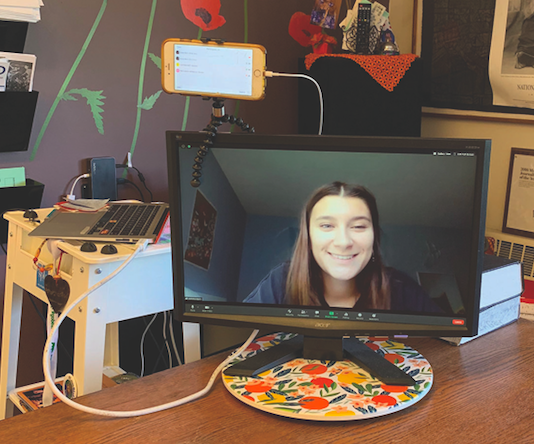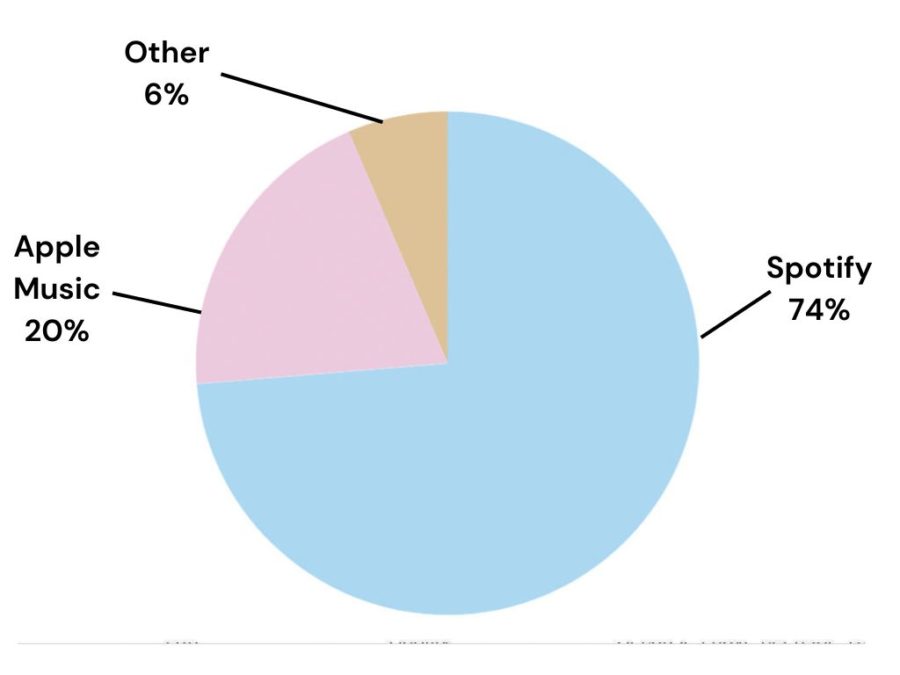
Technology has played a new role in the classroom this year by integrating remote learners with those who are learning in-person, which has caused teachers to learn to adapt and grow their teaching styles in order to accommodate the new added use of technology inside and outside the classroom.
Alita Shenk reveals that “learning to leverage the stuff [technology] so that it’s hopefully impactful” has been her biggest learning experience. “You know, not everything works for every student… Trying to find different ways to get the most out of a program without spending 12 hours on it. You know, like a student would. How do I get the most out of my assignment and not overdo it? So we are students again too.” David Graham has adapted his classroom set-up by disconnecting his extra camera. Because the camera neither pointed at the front or backboard, he realized that it wasn’t actually enhancing remote students’ learning. Graham explains, “I feel very much like I’m learning as I’m going. I don’t always know what’s working.”
Not only have teachers had to adapt to the new technology, but they have also had to adapt their teaching style. Maggie Bowman says, “I think collaborative work in the classroom has changed a lot because it’s hard to logistically make that work.” Social distancing makes small group work especially tricky when trying to have small discussions while still having to maintain a distance of six feet. As a result, a lot of teachers are using sites such as google slides or even recorded Zoom conversations as a way for students to collaborate in smaller groups. Bowman tries to engage the remote learners by having them work over Zoom with an in-person student. She explains that by doing this, “that person [at home] still gets a chance to work with a partner, just like the rest of the class does.”
For most teachers, working to serve the needs of remote and in-person students at the same time has been a challenging task. Bowman says, “I feel like I’m almost always doing a disservice to either the kids who are physically sitting in front of me or the kids who are using technology because of the fact that it’s really hard to teach both of them well at the same time.” Graham agrees, “I’m struggling [with] how to make them [remote students] feel comfortable and a part of the things and also knowing what they are hearing.” Both teachers also have concerns about how connected the remote students are because the hybrid schedule requires these students to be more assertive and active, which can be challenging for quieter students.
Additionally, teachers are taking advantage of online resources, such as podcasts and videos, so no matter where students are sitting, whether they are at home or at school, their learning experience is universal. Teachers are also using programs like Flipgrid, where remote students can engage in the same way as in-person students. Graham also strives to add a variety of activities and assignments into his lessons, so students aren’t constantly glued to their computer screens, especially on asynchronous days.
Although getting used to new technology can be challenging, “We have to be patient, we have to be understanding, and lastly, we have to be empathetic,” says Bowman.







